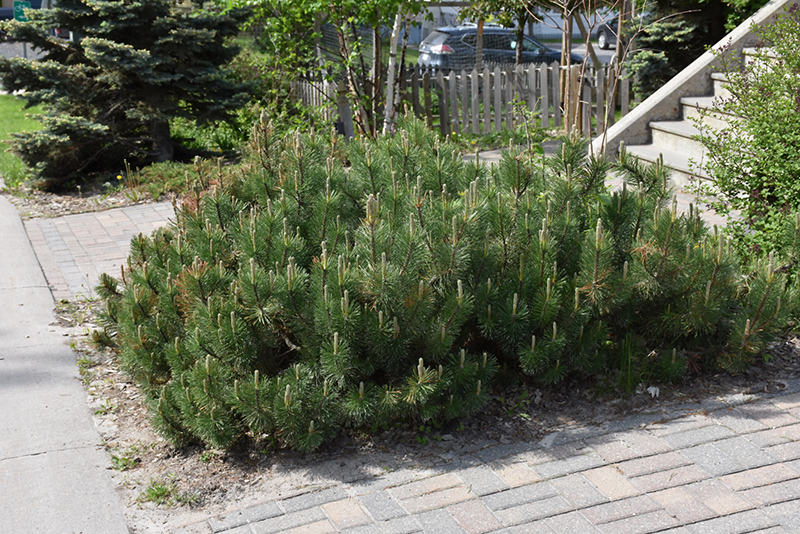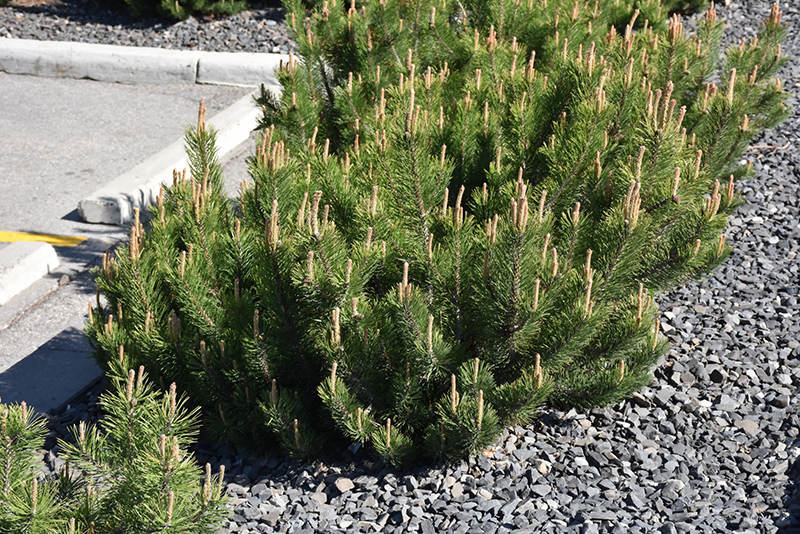Height: 4 feet
Spread: 5 feet
Sunlight:
![]()
![]()
Hardiness Zone: 2
Other Names: Mugho Pine, Swiss Mountain Pine
Description:
A naturally dwarf version of the species maintaining a dense, compact habit of growth; slow growing, rugged and hardy, excellent for form, texture and color detail in home gardens, can be kept quite small with judicious pruning; needs full sun
Ornamental Features
Dwarf Mugo Pine is a dwarf conifer which is primarily valued in the landscape or garden for its ornamental globe-shaped form. It has emerald green evergreen foliage. The needles remain emerald green throughout the winter.
Landscape Attributes
Dwarf Mugo Pine is a dense multi-stemmed evergreen shrub with a more or less rounded form. Its relatively fine texture sets it apart from other landscape plants with less refined foliage.
This is a relatively low maintenance shrub. When pruning is necessary, it is recommended to only trim back the new growth of the current season, other than to remove any dieback. It has no significant negative characteristics.
Dwarf Mugo Pine is recommended for the following landscape applications;
- Mass Planting
- Hedges/Screening
- General Garden Use
Planting & Growing
Dwarf Mugo Pine will grow to be about 4 feet tall at maturity, with a spread of 5 feet. It tends to fill out right to the ground and therefore doesn't necessarily require facer plants in front. It grows at a slow rate, and under ideal conditions can be expected to live for 50 years or more.
This shrub does best in full sun to partial shade. It prefers dry to average moisture levels with very well-drained soil, and will often die in standing water. It may require supplemental watering during periods of drought or extended heat. It is not particular as to soil type or pH, and is able to handle environmental salt. It is highly tolerant of urban pollution and will even thrive in inner city environments. Consider applying a thick mulch around the root zone in both summer and winter to conserve soil moisture and protect it in exposed locations or colder microclimates. This species is not originally from North America.


